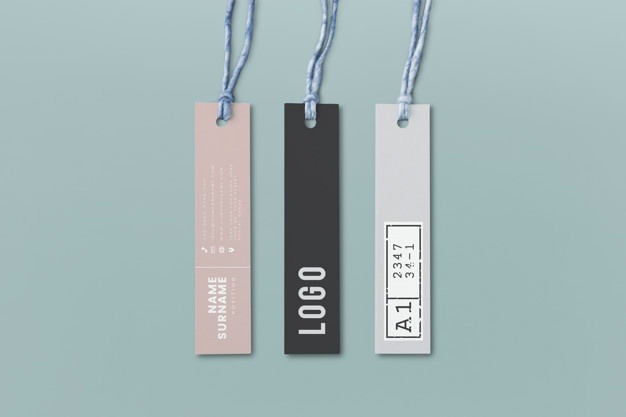What Really Happens at the Dry Cleaner?
The term dry cleaning is a bit of a misnomer. In Nigeria, the dry cleaning process refers to cleaning clothes and fabrics by using a chemical solvent that contains little or no water. While cleaning the surface of fabrics, it does not penetrate the fibres as water does in a washing machine.
Dry cleaning is typically used on clothes and fabrics that cannot withstand the rigours of a standard home washer and dryer. This process preserves the desirable qualities of many fabrics and helps to prevent shrinking and stretching. It also eliminates the need for more time-consuming hand washing. Most dry cleaners also offer wet cleaning for washable items like starched shirts, slacks, and household linens,
A History of Dry Cleaning Chemicals

Dry cleaning has been around since Roman times when ammonia was used to clean woollen togas to prevent any shrinking that happens when wool is exposed to hot water. Next, cleaners moved to petroleum-based solvents like gasoline and kerosene which proved to be highly flammable and dangerous to use.
By the 1930s cleaners began using perchloroethylene or tetrachloroethylene, a chlorinated solvent. They are highly effective cleaners and are still used by many commercial cleaners today. Both have a distinctive chemical odour. Perchloroethylene is referred to as perc and is classified as carcinogenic to humans. In the 1990s the United States Environmental Protection Agency began to regulate dry cleaning chemicals and encourage commercial cleaners to use safer, more environmentally friendly solvents.
Green dry cleaning is based on a carbon dioxide detergent system and cleaning machines that apply pressure to draw liquid carbon dioxide through fabrics to remove soil. There is no heat involved which also makes the process more gentle to fabrics.

The Commercial Dry Cleaning Process

The commercial dry cleaning process begins in your local dry cleaning storefront when you drop off your dirty clothes. Today, most dry cleaners do not have a piece of very large and expensive cleaning equipment on-site; many will transport your laundry to a central cleaning facility. This is more cost-efficient than having machines at every drop-off location. There are several steps for each item cleaned:
Garment Tagging

- Every item is tagged with an identification number. Some cleaners use paper tags that are stapled or pinned to the garment. Others use an iron-on strip with a permanently assigned barcode for regular customers. Similar soiled garments from different customers are cleaned together and tagging ensures that your clothes are returned to you.
Garment Inspection
- Before clothes are cleaned, they are inspected for items left in pockets, rips, tears, and missing buttons. These items are returned to customers and problems are noted as issues known before cleaning.
Stain Pretreatment
- As part of the inspection process, the cleaner checks for stains on the clothes and treats them before the solvent cleaning process. If you know what caused a specific stain, it is extremely helpful to tell the cleaner to get the best results in the stain removal process. This is also the time a good cleaner removes or covers delicate buttons and trim to prevent damage.
Machine Dry Cleaning
- Soiled clothes are loaded into a large drum machine and cleaned with a water-free chemical solvent. The clothes are gently agitated in the solution which causes soils to loosen. The solvent is then drained, filtered, and recycled and the clothes are “rinsed” in a fresh solvent solution to flush away any last remains of soil.
Post Spotting
- The dry cleaning process works very well in removing oil-based stains thanks to the chemical solvent. However, other types of stains are not always removed effectively. So, all garments are post spotted to look for remaining stains. The stains are treated with steam, water, or even a vacuum to remove any remaining traces.
Finishing
- The final step includes getting the garment ready to wear. This includes steaming or pressing out wrinkles, reattaching buttons, or making repairs. Items are then hung or folded to return to the customer. The plastic bags provided are only there to help you get your clothes home without more stains. It’s important to take them off right away or risk damage to your clothes from trapped moisture.
How to Get the Best Results From Your Dry Cleaner
Always Read the Labels
- This one may seem obvious but plenty of people pay no attention to the labels in their clothing, or even worse, tear them out completely. Your dry cleaner should always reference the labels before cleaning but you should be the first to call attention to any special care instructions or unique fabrics to ensure it is cleaned properly.
Don’t Try to Remove Your Own Stains
- When we spill something on our clothes or notice a stain is tempting to try to remove the stain ourselves. Avoid the temptation and get it right to your dry cleaner instead. You are much more likely to make it worse by pushing the oil, dye, or food. deeper into the fabric making it even more difficult or even impossible to remove.
Be Sure to Point Out Any Stains During Drop-Off
- Always be sure to point out and identify stains so they can be properly marked and pre-treated during the cleaning.
Point Out Any Special Buttons or Embellishment
- Some garments have delicate buttons or embellishments that require special care. Since you will probably deal with a desk clerk that doesn’t do the actual cleaning, point them out and ask if they can be protected or removed during cleaning. Ask if the items will be reattached as part of the service.
Make Special Care Requests Up Front
- Always be sure to highlight any stains, delicate fabrics or embellishments at the time of drop off. Do not leave it to chance or simply assume all will be well during the dry cleaning process. Establishing a dialogue with your cleaner will give much better results that you and your clothes will appreciate.
Conclusion
Let someone else take care of the laundry
If you’re overwhelmed by piles of grubby laundry, then why not let someone else deal with it? Our award-winning dry cleaning and laundry service makes wash day a breeze. Upon subscription, We’ll collect your laundry, clean and iron it using professional methods and equipment, and return it to your door. We’ll even fold or hang it for you, so it’s ready to go straight in the wardrobe or drawer.
Your washing machine needs to be cleaned thoroughly every couple of months, and you should be running a
hot maintenance cycle at least once every two weeks. This will leave your machine out of action for a few hours, so subscribe to our service and let us handle the hard work while you scrub up.


Add a Comment